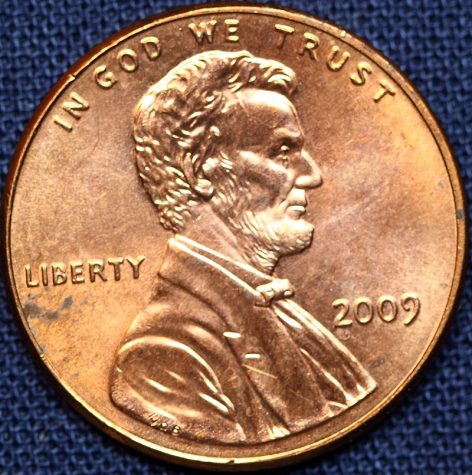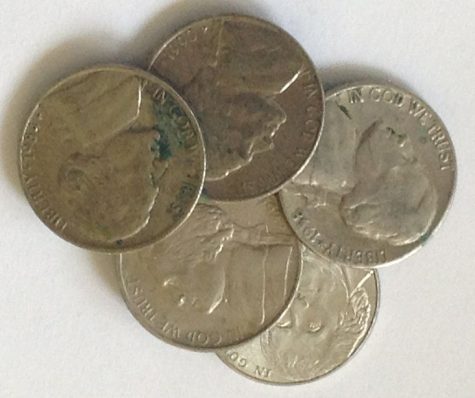Pennies Call for Change
April 26, 2019
Many people hold pennies in a special place of their hearts, but over time, the one-cent coin has become less deserving of that love.
Throughout the last couple years, the cost to mint a penny has ranged from 1.66 to 2.4 cents; since the production of currency is meant to create money, the fact that pennies are so expensive in comparison to their face value illustrates a fundamental issue.
There are two prominent organizations in the battles for and against pennies: Americans for Common Cents and Citizens to Retire the U.S. Penny.
While advocates like Americans for Common Cents often point out that charities tend to rely on pennies during fundraisers, the more common argument used is sentimentality; most people simply do not like the idea of changing aspects of the United States’ current monetary system.

Photograph by Mark Morgan from Trinidad [CC BY 2.0 (https://creativecommons.org/licenses/by/2.0)]
The fact that approximately 43% of people say they would be angry or upset if pennies ceased being used is a testament to how affectionate people are.
Penny supporters also defend keeping the piece of currency because it helps to honor former President Abraham Lincoln; however, Lincoln is still present on the five dollar bill.
A more serious concern is that the removal of the penny will cause prices to rise.
The truth is that the way payments change will be decided on a store-to-store basis.
Some places would round prices up a few cents, whereas others would round down; as a result, it is estimated that the two approaches would eventually even out, meaning overall expenses would not alter by a noticeable amount.
Currently, many businesses see the wasted time in handling penny exchanges as a financial loss in the long run.
In response, some stores across the countries have begun to stop accepting pennies and round in favor of customers, rather than raising prices.
Multiple Chipotle restaurants that tried rounding charges to the nearest nickel found that customers were irritated by the higher bills.
Instead of returning to regular pricing, these Chipotle locations decided to round down because losing a cent or two was seen as less costly than misusing time at the cash register counting pennies.
Besides, these alterations would likely only occur in cash transactions; nonphysical payments, like on a credit card, would be expected to go unchanged.
Multiple countries, including Canada, have already removed their one-cent coins, and Congress tried to abolish the penny in 2002 and 2006.
The U.S. has stopped using currency before, considering the halfpenny was withdrawn in 1857.
Halfpennies were eliminated because they grew too expensive to produce compared to their face value and were too small of a measurement to actually use.
These are the same issues that the penny faces today.
On one note, the cost to mint a penny would not pose concern if they were circulated for many transactions, but pennies simply do not stay in circulation very long; they either end up in a jar or lost.
Two-thirds of pennies are out of circulation – often from being thrown away.
In reference to usage, a single penny in the 1980s could be used to purchase things like candy, but that is not the case anymore.
Even vending machines and parking meters do not accept the coins.
The purpose of currency is to facilitate the exchange of goods and services, and pennies cannot do that effectively.
Ideally, if there was a plan to remove the penny, only manufacturing would stop; people would still be allowed to use the coins, but it would be discouraged.
This would allow for them to be phased out, rather than abruptly removed, which gives time for people to adjust.
The largest issue that might come with abolishing the penny would be the nickel.

Photograph by Yinan Chen [Public Domain]
The price to mint a nickel has ranged from 6.23 to 11.18 cents.
The loss of the penny could push more people to use the nickel, requiring more to be made, which would in turn cause greater financial losses than the penny had on its own.
Given that the nickel faces all the same issues that the penny does, there is reason to say both should be removed from circulation, but simultaneously eliminating two coins would not be well received by Americans.
Regardless, failures to scrap the penny are seen by some public figures, such as former President Barack Obama, to represent a larger government issue in terms of its inability to recognize when something does not work and instead invest in things that do.
Many people have a difficult time facing change, but pennies have become a flawed piece of currency that require serious attention.














